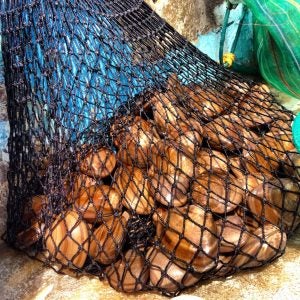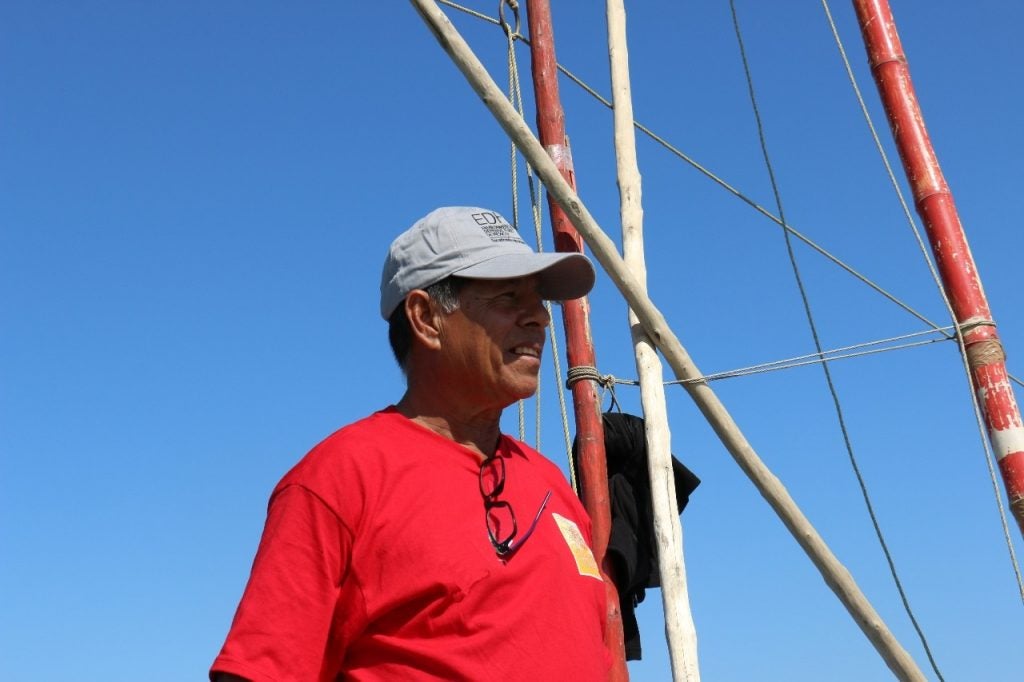A year ago, Fidel Insunza was not very optimistic about his future in fishing. With more than 30 years on the water, he has seen prosperous times come and go in Altata-Ensenada del Pabellon, a coastal lagoon system in Sinaloa, Mexico. Back in the “good days,” as he calls them, his income allowed him to buy a brand new pick-up truck or take his whole family on vacation to participate in Mazatlan’s famous Carnival. “Those were the days,” he recalls with nostalgia. Today, his income has reduced to a third of what it used to be. But he is not ready to give up on fishing just yet. “This is my life, the heart of my community, and I would choose to be a fisherman once more if I was born again. The only difference is that I would do it more responsibly,” he says.
Unfortunately, Fidel cannot go back in time to enjoy the good days again, but he is optimistic that by learning from the past it is possible to create a better fishing future for himself and his community. That is why he, along with other fishermen from Altata Ensenada del Pabellón Coastal Lagoon, are working with EDF and the Mexican government to rebuild and conserve one of its most iconic and important fisheries, the chocolate clam.
The chocolate clam (Megapitaria aurantiaca), named after the creamy brown color of its shell, is one of the largest bivalves found in the coast of Sinaloa and one of its most important fisheries, because its economic and social relevance. The fishery has supported hundreds of families during the closure of shrimping season, which is the main source of income for most of the region’s fishing families.
 Now, the chocolate clam is becoming more popular among foodies in the region. Its particular color and well-defined taste has increased its popularity, turning it into one of the most lucrative fisheries in Altata. But its growing demand and lack of a management measures led to an alarming decline of 92% of its population from 2006 to 2014.
Now, the chocolate clam is becoming more popular among foodies in the region. Its particular color and well-defined taste has increased its popularity, turning it into one of the most lucrative fisheries in Altata. But its growing demand and lack of a management measures led to an alarming decline of 92% of its population from 2006 to 2014.
To rebuild the population, Fidel and his fellow fishermen called for the establishment of a “no-take” zone, which was recently passed into law. The new protection area will encompass 1.6 hectares, the equivalent to more than two soccer fields, and provide chocolate clams and other bivalve species with a protected area which will also allow larvae to overflow to other key chocolate clam fishing areas that will remain open. The next step is the adoption of a Fisheries Management Plan (FMP) for all the species caught in the lagoon.
The proposed FMP is the result of years of work by EDF staff in close collaboration with fishing communities, Mexican fishing authorities, scientists and partner NGO’s, and is the first-of-its-kind in Sinaloa – the second largest fishing state in Mexico. Its multi-species approach includes the simultaneous management of critical fishing resources, such as clams and oysters, fin-fish, soft crab and shrimp. In addition, it stands out for using the best available scientific information for its design – including historic samples, monitoring of fishing activity, socio-economic surveys, as well as Geographic Information Systems to set the boundaries of the no-take zone. These resources were provided through the collaboration of the Mexican Fishing and Aquaculture Institute (INAPESCA), EDF Mexico, Pronatura Noroeste, and other national and regional academic institutions.
However, the plan’s most distinctive characteristic is its participatory approach, which included active engagement from fishing communities, Mexican federal and regional authorities, scientists and NGO’s. The announcement of the no-take-zone is a milestone by itself; it is another proof point for the power of collaborative, community-based efforts to ensure sustainable fishing and healthy fishing communities.
The empowerment of men and women through the design and decision-making processes of their resources is a critical part of reforming the way fisheries are managed. As Fidel likes to remind us, it is their life after all. “Today I may not have as many things as I used to,” Fidel admits. “But I have something better – an opportunity to create a legacy for my community: an Altata Bay full of life, one that my children and grandchildren can still enjoy and feel proud of.”
We are glad to be contributing to this legacy and we will continue working together so that more people in Mexico can have secure and sustainable future.










